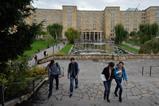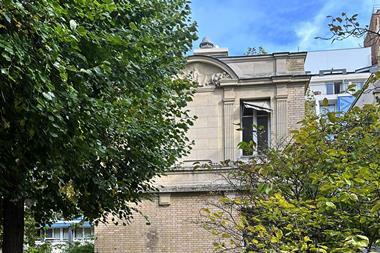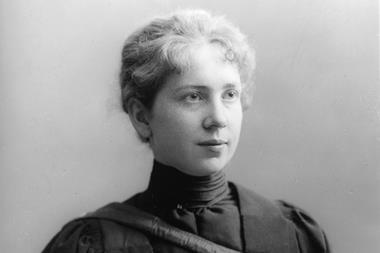Plans to move the Parisian building in which Marie Skłodowska-Curie and her colleagues prepared and stored radioactive material brick-by-brick to a nearby location have been scrapped.
The Pavillon des Sources is one of three buildings that made up the Institut du Radium, which has since merged with the Curie Foundation to form the Curie Institute – the organisation with responsibility for managing the site.

In January, it was announced by the French minister of culture, Rachida Dati, that the Pavillon would be dismantled, decontaminated and reconstructed ‘stone by stone’ at a location a ‘few dozen metres’ away. It was said that in its new location it would become an enlarged wing of the Musée Curie and a new building, constructed in its place, would house the chemical biology and cancer scientific project. It was originally set to be demolished completely but these plans were strongly opposed by defenders of Parisian heritage.
However, on 13 April it was announced by the Curie Institute that, following an ‘in-depth study’ carried out in conjunction with the French Ministry of Culture and partners, it had been decided that the Pavillon des Sources would remain in its current location and instead be integrated into a new building dedicated to research called ‘Marie Curie – Claudius Regaud’.
The Institute said that construction of the new building would allow the chemical biology and cancer project to go ahead. The organisation now has until 12 May to submit a modification permit to the City of Paris and the Architecte des Bâtiments de France before the building can go ahead.
‘This project fits perfectly into the scientific heritage of Marie Curie and will increase knowledge of the functioning of tumours to develop new therapeutic strategies for patients,’ the institute said in a statement.
Under the plans, the preserved Pavillon des Sources will become a new cultural space for the Musée Curie, paying tribute to the two founders of the Curie Institute – Marie Curie and Claudius Regaud – through a modern museum tour while presenting recent discoveries in the fight against cancer.
The first stage of the project will involve decontamination of the building, which will begin in mid-April and take three months. The decontamination – which is set to cost €1.8 million (£1.5 million) – is necessary as several parts of the building are still radioactive.
The demolition plans were originally publicised by Baptiste Gianeselli, a defender of Parisian heritage who has been campaigning to preserve the building ever since. ‘The building is now recognised as a building of heritage interest, and the French Minister of Culture undertook to list it as a historic monument in January,’ Gianeselli told Chemistry World. ‘Destroying it was out of the question, so they announced that it would be integrated into the new Institut Curie building, without giving any further details – everyone, including me, rejoiced and congratulated the minister.’
However, Gianeselli says he now understands the celebrations were premature. ‘A very well-placed informant told me that the new building would be built on top of and to the side of the Pavillon des Sources,’ he explains. ‘In this new project, the Pavillon would be swallowed up by the new building, which would be seven storeys high.’
Gianeselli says he has regular discussions with Pierre and Marie Curie’s 96-year-old granddaughter, Hélène Langevin-Joliot. ‘[She] is concerned as she would like to see the site protected as a historic monument,’ he says. ‘We’ve asked the ministry for visuals of the new project. For the moment, we’re waiting.’
The Curie Institute said the next stages of the project would be ‘communicated later’.

















No comments yet